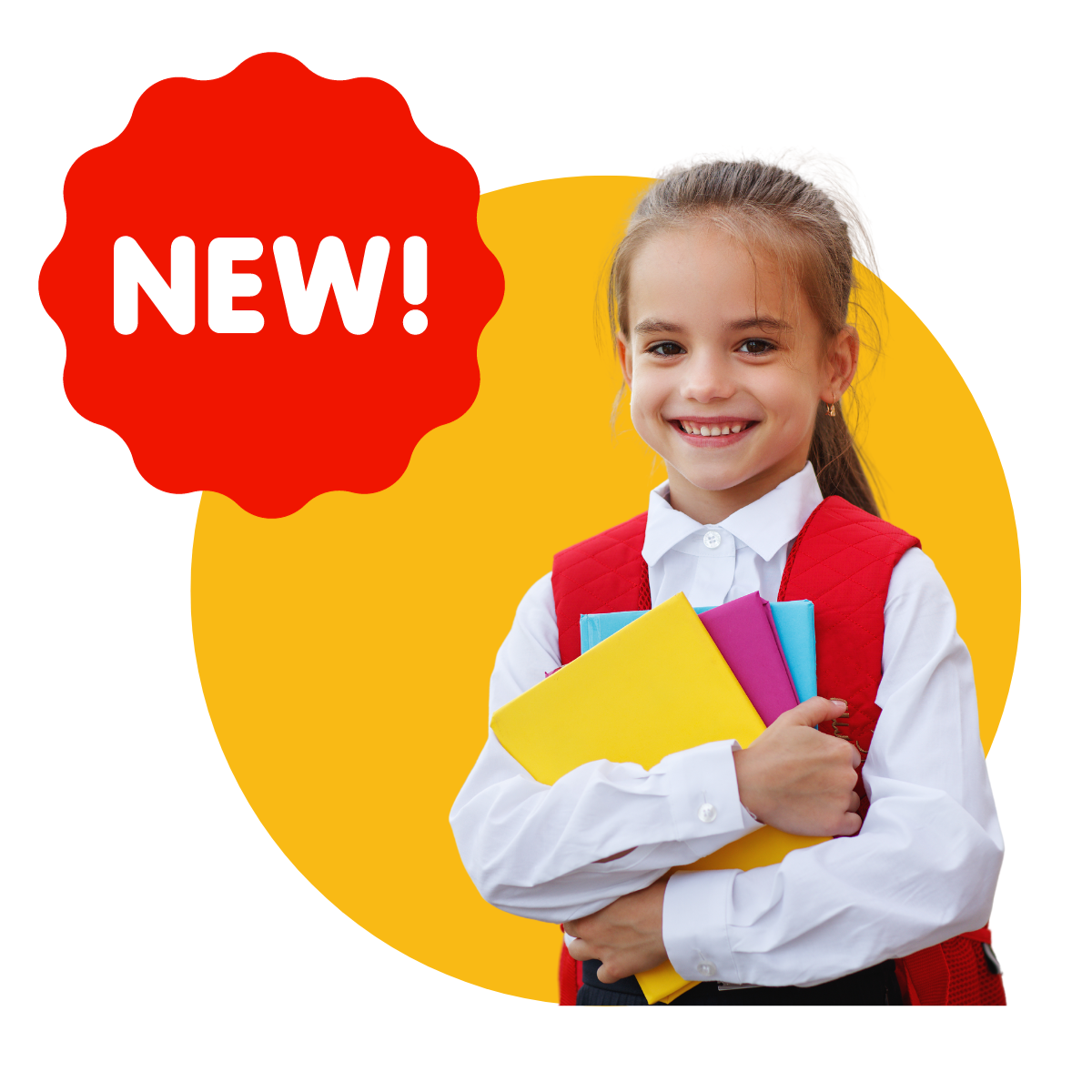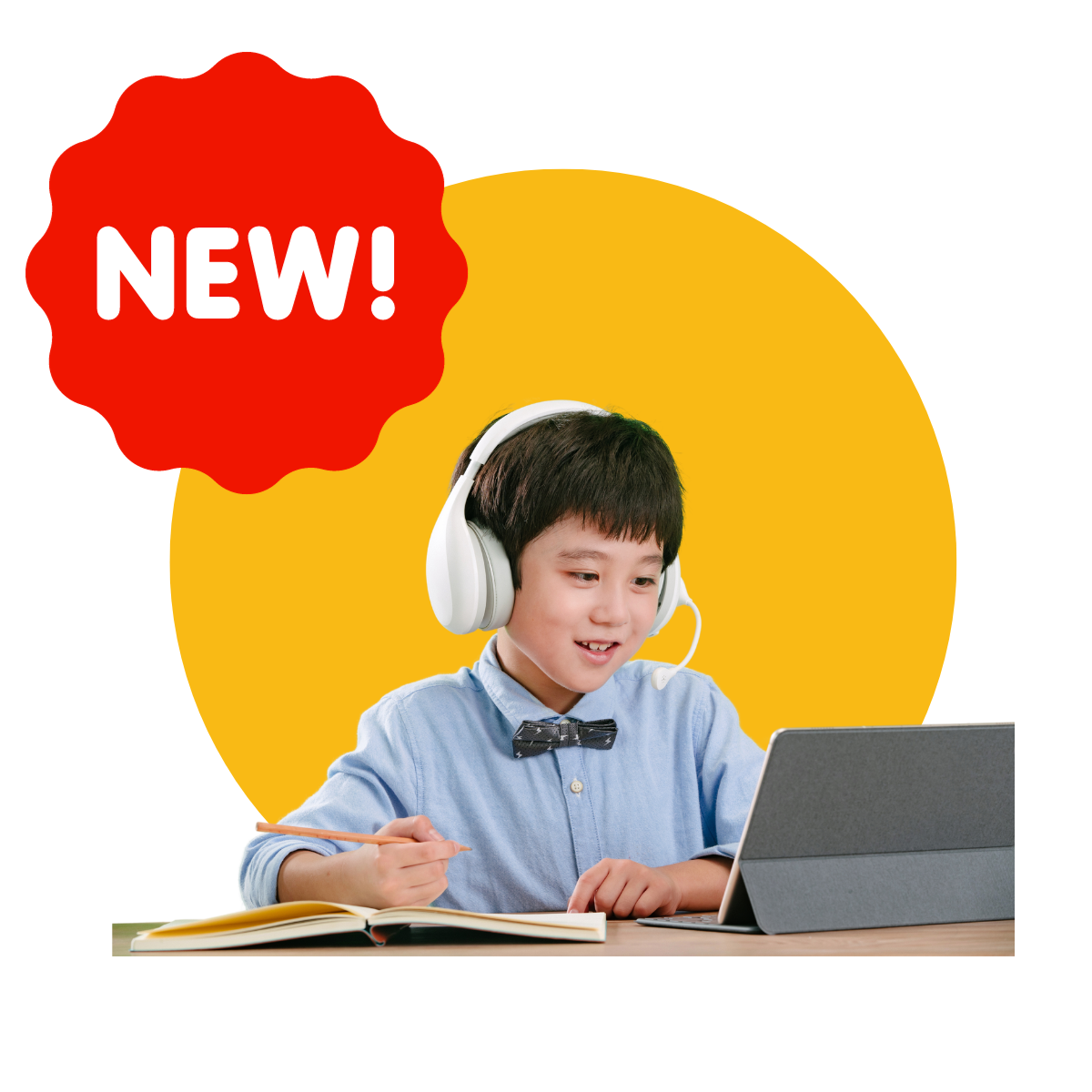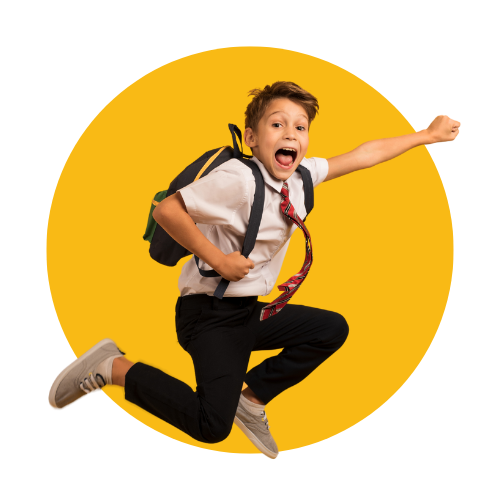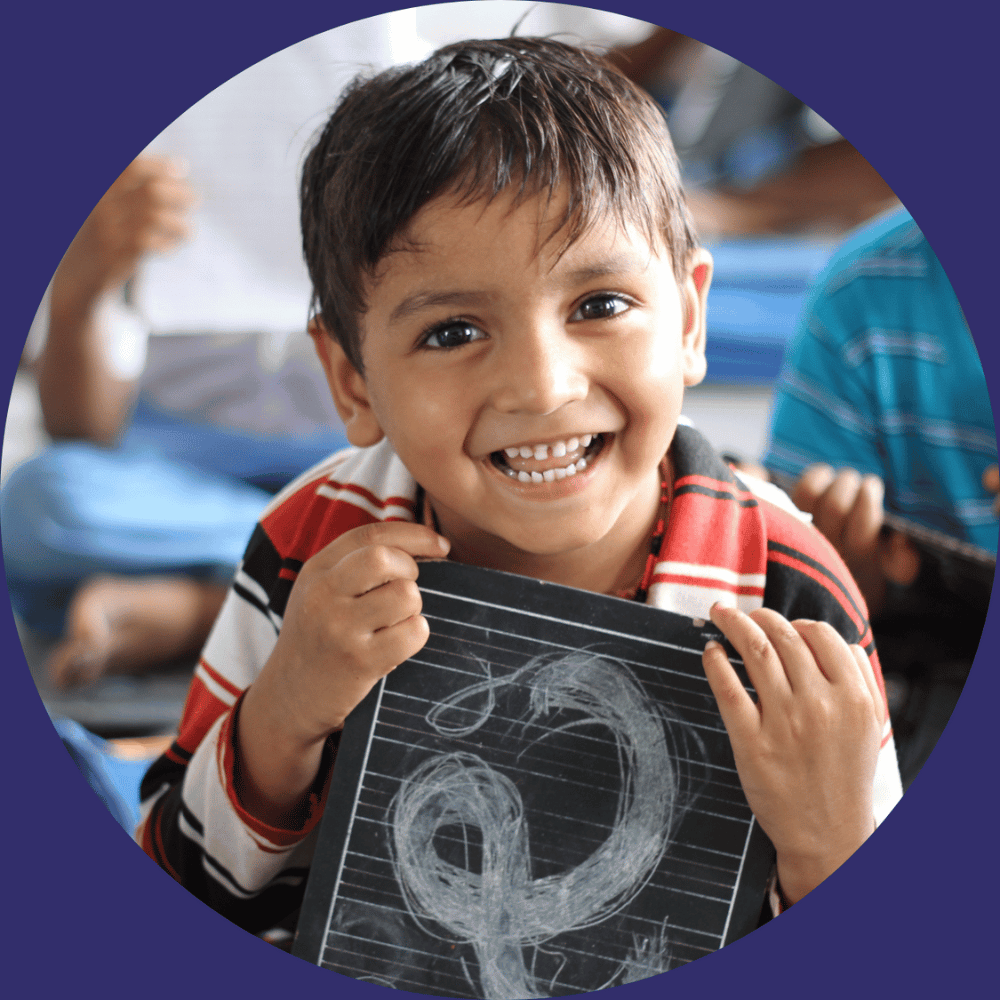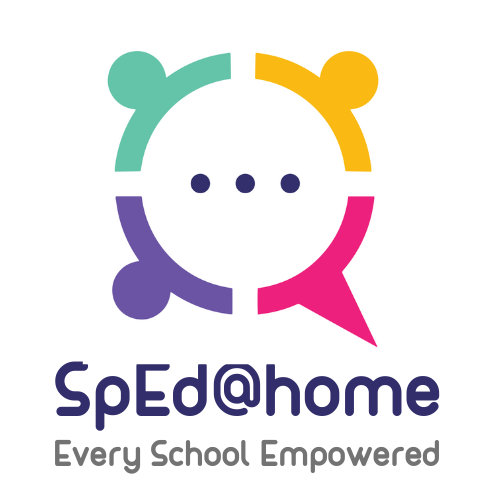As a general observation, children will frown when spoken to about school. Some find a happy place at their schools, while some struggle to keep up. Often, this attitude is regarded as some sort of a lazy excuse to keep away from school. However, if you look closely, there is. his possibility that this may not be a general attitude but someone out of them might be having a genuine learning disability (LD).
Some school stats suggest that around 5-9% of students in a school have a learning disabilities. It is a neurological disorder that affects the brain’s ability to receive, process, store and respond to information. And different levels and kinds of this difficulty are denoted with different terms. Learning disability may not be visually identifiable, however with the right assessment tools under expert guidance can help diagnose and manage the situation.
If you observe any kind of an inexplicable difficulty in your child’s academics, it is recommended that you take an assessment to identify the root causes of the same. It may or may not be a disability but it is always good to be sure. Assessments help in understanding the proficiency of the child interns of academics, motor skills, etc. With an assessment it becomes easy to design a bespoke and effective development plan for the child. This development plan may also include therapy sessions as and when required.
Therapy is the right way forward as it not only helps in academics, it also take care of the overall development. Parents are always worried about academics, and children too. They follow traditional ways to make sure their child studies and attains good grades. However, some of these children have special and differential needs that go unidentified and then the roll of adverse effects start. The child is unable to cope up with their peers and is always left behind. And in the long run, the educational gap widens to irreparable extents. Therefore it is important to look for the earliest clues and symptoms to avoid such damage.
Here are some points to reflect upon.
Take charge of your child’s education
Help them strategize their education journey with the help of experts.
Take an assessment
Every child has a learning pattern that suits them the most. Identifying this can be a breakthrough to plug your child’s learning gaps.
Focus on life success, rather than school success
It is important to look beyond the grades and marks. Best way to do this is by teaching them self-awareness, self-confidence, independence, goal setting and help-seeking behaviour when needed.
Emphasize healthy lifestyle habits
Teaching children with special needs the importance of a healthy lifestyle, can help them be organized, healthy and stress free. Incorporating exercises. a balanced diet and adequate sleep is a great starting point.
Encouraging healthy emotional habits
Being frustrated by challenges is natural. Provide them with an outlet to express their anger, frustration, and feelings of discouragement. Listening to them is crucial. Doing so will help them connect with their feelings and, eventually, learn how to calm themselves and regulate their emotions.
It boils down to a conclusion that; if a child can’t learn the way we teach, maybe we should teach the way they learn. This will not only help them in their curriculum but also in life.
Some learning disabilities as follows
- Dyscalculia – Affects a person’s ability to understand numbers and learn math facts.
- Dysgraphia – Affects a person’s handwriting ability and fine motor skills.
- Dyslexia – Affects reading and related language-based processing skills.
- Dyspraxia – Affects the movement and co-ordination
Dysgraphia is a learning disorder. Children with dysgraphia have a hard time in writing. They are odd or slow writers. Their spellings, handwriting, and written expression isn’t normal or legible. You can find inconsistency in the way the hold their writing equipment, and even their way of writing. The strokes and forms can be different even if they are writing the same text again. Not only the creative expression, their spellings are off too. This learning difficulty has a huge negative impact on the child’s academics. And also takes a toll on their confidence and focus. Children with this learning disability are often referred for Occupational Therapy. Occupational Therapy can help manage and bring out the best learning outcomes.
Also read: Dyslexia Vs Auditory Processing Disorder – Differences & Similarities
Some key indicators to an underlying situation are as follows.
- Bad handwriting
- A mix of cursive and block style writing
- Improper spellings
- Inappropriate sentence construction.
- Incorrect use of words or letters.
- Slow writing.
- Incorrect way of holding the writing equipment
Dysgraphia can be identified in various types. Some as follows:
Dyslexia Dysgraphia
Dyslexia Dysgraphia does not necessarily mean the child is dyslexic. However, it inclines towards the dyslexic condition of learning disability. In this, the child may not be able to write correctly without a visual reference. They can easily copy and replicate matter but not imagine and transfer the same to the writing surface. This affects writing styles and spellings too.
Motor Dysgraphia
Children with Motor Dysgraphia have weak motor skills, coupled with weak dexterity. They have less or no control over their hands and due to a weak motor setup their writing skills aren’t developed. Their handwriting and spellings are off too.
Spatial Dysgraphia
This learning disability refers to the trouble with spatial awareness. Children with spatial dysgraphia find it difficult to judge space between lines and use the right amount of space between words. Any written form of content from them is usually not legible.
Phonological Dysgraphia
In this learning disability, children experience difficulty in writing and spelling, especially with unfamiliar, jumbled, and phonetically irregular words. Children with Phonological Dysgraphia find it hard to retain similar sounding words in memory and put them in the right sequence to produce the target word.
When children are unable to keep up with their expected learning curve, their core academics are adversely affected. In such times, these children are given a compensatory education assist. This is known as developmental Education, or commonly known as Remedial education. This helps them keep pace with their core academic skills – literacy and numeracy.
Assessment
While remedial education is an appropriate measure to help your child, it is important to understand the right approach towards it. Before entering such programs, it is (highly) recommended to get an assessment. An assessment that identifies the proficiency of your child’s foundational literacy and numeracy skills. This helps mark the right start point for your child’s development education.
SpEd@home is acing in the areas of pre-therapy assessment with their latest innovative SPEED 2.0 platform. While a traditional assessment takes hours or even days to provide the right reports, SpEd@home’s solution provides the same within an hour. Additionally, it refers to various reading and combinations to provide an in-depth understanding towards your child’s proficiency. As of now, SpEd@home provides two kinds of Assessments – Educational and Occupational Therapy.
Post Assessment
Following a proper assessment, our experts design a bespoke development plan for your child. It isn’t a one size fits all, a custom plan ensures the appropriate learning outcomes. Development mainly involves Therapy. Therapy is a one-to-one program by the Special Educator to the cild with differential needs.
Therapy for differential needs
Remedial Therapy and Occupational Therapy are two of the most sort kinds of therapy. Also, educational therapy is a general term for when an educator works one-on-one with your child, typically outside of school. Tutions have been the only out of school educational development programs that parents have put their children too. However, now, many parents globally have started to accept and take up home schooling for remedial education and therapy for their children with special needs. The idea is to let children explore, away from the textbooks. Learning the subjects with things they like, for example butterflies, robotics, or cars, makes it easier for children to grasp what is being taught.
It is important for children to have a multi-sensory learning environment. Such an environment has positive effects for special needs children. Remediation and Occupational therapy allow children to start from their short falls and improve on each one by one.
Online mode
The online mode of education has turned out to be easily accessible, affordable, and flexible. The benefits are immense, especially in the field of special education. Special education does have a special status but due to lack of awareness and access to resources, children have suffered. Also, the acceptance is also an alarming concern. With everything managed online, it is easy to reach the masses, spread the message through engaging content, and reach the ones in need. A blended learning platform that combines an offline product with an online delivery platform makes special education (more) effective. Children can get in touch with their teachers, and special educators on the go. Therapy is in their reach and affordable too.
Technology has steadily taken over every industry and it was only a matter of time before it reached the education sector. Today, learning is no longer restricted to physical classrooms. Online learning has gained popularity thanks to the pandemic and the flexibility of its execution. When online learning and traditional classroom learning come together, it is called Blended Learning- a platform that combined the attributes of both programs to create an effective learning style.
SpEd@home is India’s first ever blended learning platform for children with special needs. Our innovative technological solutions use various kinds of blended learning tools to ensure a seamless delivery of education to children with differential needs.
Let’s take a look at the different kinds of Blended Learning here:
Rotation Blended Learning
Rotation Blended Learning is where students rotate between traditional teacher training and online learning on a schedule determined by the teacher. These are further divided into station rotation or lab rotation. As the names suggest, students rotate between stations or labs for improved engagement and access to online leaning. As long as one group is engaged in online learning, teachers can focus traditional classroom learning on the other smaller group.
Flipped Blended Learning
Flipped Blended Learning is a program where the roles of a classroom and home is reversed. Instead of the usual training in school and homework at home, here the learning happens at home through online models and the assignments are carried out in classrooms under the guidance of a teacher.
Flex-Blended Learning
Flex Blended Learning is where students receive all course information online but the teaching is done in traditional learning classrooms. Here learning is carried out online and teachers are available to discuss and doubts in smaller groups. In Flex-Blended classrooms, teachers are guides rather than primary learning sources.
Enriched Virtual Blended Learning
Enriched Virtual Blended Learning is where the course is entirely taught online and students can choose if they want teacher guidance. This program doesn’t require teachers to be constantly present and all the learning and assignments here are done using online material.
It should be noted that there is no specific form of Blended Learning. This concept can be customized to suit the requirements of both teachers and students.
Dyspraxia involves having difficulties with movement and coordination. This leads to problems like failing to be organized or following instructions in school. It also leads to them falling behind their peers and feeling low on confidence. This development disorder is caused due to a breakdown of messages transferred from the brain to the body affecting the child’s ability to coordinate and execute body movements.
A lot has been said about Dyspraxia but the most notable is herewith- “Dyspraxia is on a spectrum, so some learners will be more severely affected than others and Dyspraxic individuals will tend to have multiple symptoms rather than a whole gamut of attributes. Each learner with dyspraxia is unique and effective strategies will vary between individuals.”
Helping a child through their symptoms can be quite challenging. That’s why we have compiled some tips that can help when dealing with a Dyspraxic child.
Start early
Dyspraxia starts during early childhood, and can be identified if the child shows symptoms like delays with sitting up, talking, walking, or toilet training. If these symptoms are recognized before the age of two, parents and children can seek early intervention for Dyspraxia.
Practice skill activities
When faced with learning new and challenging tasks or skills, children with Dyspraxia often require opportunities to practice these skills. This can be accomplished by showing and telling the child exactly how the task is done. This can take time, so it is essential not to lose patience while the child is struggling and to nurture them with patient and support.
Playing can help manage the discomfort
Dyspraxic children can have problems making friends in school which can be a source of frustration and isolation. The increased time they take in learning skills used in sports such as running or catching a ball can also result in them leading a less active lifestyle. Hence, one important way of supporting children with Dyspraxia is to play beginner level and easy games at home and in class to encourage social interaction.
Breaking down and repeating instructions
It is also helpful if Dyspraxic children are given simple instructions one step at a time, instead of burdening them with too much information. Instructions must also be repeated to ensure that children understand what to do. Start with simple tasks and gradually increase the difficulty level of the same.
Focus on strengths
This is especially important for children with Dyspraxia. Playing on the child’s strength can help ensure that they are motivated and able to do their best in certain tasks, instead of expecting them to perfect all skills.
Recognise and act
Depending on the severity of Dyspraxia, medical intervention may also be necessary. If left untreated, a Dyspraxic child will have confidence issues, might face bullying, anxiety, and stress which exceeds as they grow older and have to be more independent. Your child must be referred to an expert so that they can find their way out of challenging situations throughout their life.
Lastly, and most importantly,
Therapy
Seek therapy for your child. Occupational therapy is an essential tool when it comes to helping children with Dyspraxia. These not only help the child in mastering certain basic skills but also keeps the child active and motivated in their daily life.
However, it is recommended to opt for an Assessment before your begin with any kind of therapy. Talk to our experts about this. Get in touch for a FREE assessment.
Traditional classroom learning is largely led by the teacher. Blended Classroom learning is a concept that gives students some control in the progress of their course. Here, teaching takes place using a combination of physical and online classroom teaching programs. This gives the students the power to be able to learn at their own pace in the teacher-defined schedule.
SpEd@home adopts the Blended Larning approach to ensure an effective teaching and learning course for children with differential needs.
Benefits of Blended Learning
Blended Learning is a two-part program that is a mix of both classroom and online learning. Here, teacher-student interactions are facilitated in classrooms led by the teacher and another part of the course is available online. Students can set their own pace, location, and time of learning this course material.
Blended Learning strategies can also be adapted into a 100% online setting. Here teachers can interact with students via live video sessions, webinars, and online learning material.
Benefit to students
Blended Learning gives students a platform to determine a pace that suits them best. Often, it is seen that high-achievers tend to keep up with the schedules while poor performers may struggle. Blended Learning allows students the flexibility of scheduling their own course thus helping build confidence and enhancing comprehension.
Benefit to teachers
Blended Learning programs also benefit teachers as much as it helps students. Teachers can focus on developing the course without having to worry too much about the pace for each student. This also leads to more meaningful interaction sessions and enhancement of understanding the course material without being bored of it.
Thus, as a program, our Blended Learning provides the best of both worlds- Traditional classroom learning and online teaching for better student engagement. Teachers can learn more about this format and how to excel at it with our latest capacity building programs.
The recent global pandemic not only uprooted our ways of lives but also flipped the education system on its head. Online classrooms replaced physical one-on-one learning. This new virtual classroom has been quite the experience for both teachers and students who are accustomed to the traditional style of teaching. Let’s take a look at the most prominent differences between traditional learning and e-learning.
Learning environment
It is easier to control the learning environment in an institution as opposed to when you are in a virtual classroom. An online setup means that it is solely upon the teacher to create a friendly classroom environment that demands a traditional classroom-like decorum. A dedicated work space creates a routine you’d expect from a traditional classroom and ensures that students behave in a respectful manner throughout class.
The evolution of teaching
In a traditional classroom, it is easy to teach with the help of physical objects like charts, cards, and other written instructions. However, this can be difficult to execute in an online classroom. Teachers have to now find ways to add creativity to their lessons. Students are at risk of losing interest in an intensely verbose class which is quite the challenge
Monitoring and Feedback
Physical classrooms allow teachers to move around the class and monitor students which means they can pick up the earliest signs of boredom or confusion. This becomes difficult in virtual classrooms as teachers are unable to receive real-time feedback on their lessons- hindering their ability to modify or revise their teaching style.
All said and done, it is notable how teachers have adapted to virtual classroom formats and are in the process of overcoming all challenges they face along the way.
Special education has a million unfamiliar words and terms. These, if misunderstood, can make communication difficult in many ways. Here’s part two of our jargon buster series, decoding the complex in simple words.
Jargon Busters | Special Education Part 1
Autism Spectrum Disorder
Autism Spectrum Disorder (ASD) is a neurodevelopment disorder. The ‘neuro’ factor is about how the brain is wired, affecting the communication and interaction skills of the child. The ‘developmental’ factor of the disorder refers to the disorder being identified at the early developmental stage of life, within two to three years of age. Children with Autism Spectrum Disorder face difficulties with verbal and non-verbal communication. This affects their ability of effective social interactions. Here are some common known facts of Autism Spectrum Disorder:
- Boys are more likely to affected with ASD than girls.
- There is no medical detection of ASD.
- ASD is not completely curable.
- Early intervention can help manage ASD and improve learning.
- Occupational Therapy can help children with ASD.
Attention Deficit / Hyperactive Disorder
This is another example of a neurodevelopment disorder which is commonly identified in children. Not only children, it can also be observed in adults. ADHD is a disorder and individuals with ADHD have a (very) disorganised energy. They energy needs constant channelising and controlling to avoid unwanted circumstances. ADHD can not be prevented or cured, however, an early intervention can help manage.
It is difficult for individuals with ADHD to focus on one thing. They have a short or no attention span and get distracted (Very) quickly. They can be hyperactive and may need some heavy exercises and activities to calm themselves down.
Also read: Effective ways to handle children with Attention Deficit-Hyperactivity Disorder (ADHD)
Dyslexia
Dyslexia is a learning disorder. Children with dyslexia have difficulties with reading. Their reading skills are delayed and thus they face trouble with speech, identifying letters, comprehending words, etc. On an initial glance it is easy to confuse this disorder with visual perception and vision. However, a dyslexic child can have normal vision and intelligence quotient. Apart from the reading and learning difficulties, dyslexic children also face issues with memory and focus.
Bonus fact: There are different types of Dyslexia – double deficit dyslexia, surface dyslexia, phonological dyslexia, rapid naming dyslexia, and visual dyslexia.
Often times it is observed that developmental problems are not detected as quick as a physical disability. However, if detected early, learning disabilities can be managed and children can go on to lead high functioning, independent lives.
Read on for five main indicators to look for to determine whether your child needs Remedial Therapy.
Hyperactivity or Attention deficit: Symptoms like short attention span, making careless mistakes in class work, inability to follow instructions, leaving work incomplete, procrastination, losing things, easily distracted, bad memory, hyperactivity, impulsivity, extreme fidgeting etc are all early signs of ADHD and its variation- combined ADHD. By detecting it in time, Remedial Therapists can create a unique program that benefits the child in his most important years.
Autism: When a child doesn’t show any signs of speech by 16 months or displays poor eye contact and lack of response when they are called by name, it is likely that they are showing early signs of autism. Other symptoms include wanting quiet, repeating their actions, lack of conversation, strange language patterns, and inability to fit in with their peers. Consulting a Remedial Therapists can help detect the severity of the child’s disorder and help create a strong support system to help them develop into a high functioning individual.
Dyslexia: Dyslexia symptoms include difficulties pronouncing and rhyming words, trouble with vowels, and switching syllables. Talking to a Remedial Therapist can help understand and find solutions to the unique problems faced by a child.
Language learning disabilities: Children who struggles with pronouncing words and forming sentences are at a risk of developing issues while learning to read. One way to monitor their language skills is by keeping watch oh their reading development by keeping in touch with their teachers in school to ensure they are reading at the right levels. If a language disability is detected, do not hesitate to speak to a Remedial Therapist who will design a program that helps your child navigate through language without being overwhelmed by it.
Learning disabilities: If it is observed that a child is not learning at the same level as their peers and is having difficulties recognizing shapes and letters, has trouble with writing, and has a small attention span, it is recommended that the child is assessed by a therapist to understand the underlying problem.
It may seem difficult to accept the conditions, pertaining to your child, discussed above. However, you can start with an assessment to have an answer to all your doubts. Remedial Therapy is not an overnight answer to your child’s learning difficulties. However, it is a great start into managing your child’s learning curve and keeping them from becoming too overwhelmed by the world.
Book a FREE Assessment.
Occupational therapy helps children facing motor, physical, cognitive, and speech delays. Occupational therapists focus on making children overcome their disabilities, chronic illnesses and injuries, and live an independent life. They analyse the child’s unique developmental needs and design activities beneficial to them.
How does one identify if their child needs Occupational therapy? Look for these five signs:
Avoiding Eye-Contact: Avoiding eye contact may not be a sign of a serious developmental issue but it could be an indicator to see an Occupational Therapist to assess and determine if your child needs therapy.
Delayed or disturbed fine motor skills: Fine motor skills involve the small muscle movements. These are using hands for gripping, catching, grasping. If your child finds it difficult to use both hands while doing simple tasks or when playing, it may mean that they need support to develop their fine motor skills. While this can be due to a number of reasons, Occupational Therapy can help make significant improvements.
Sensory Processing Disorder: Does your child show signs of avoiding certain surfaces and/or textures? Or are they overly sensitive towards lights and sounds? This points towards Sensory Processing Disorder- which can be overcome in an easy way through activities designed by an Occupational Therapist.
Difficulty in completing mundane tasks: If you notice your child having difficulty completing mundane everyday tasks like dressing up, it could be a sign that their fine motor skills need some development. Instead of helping them finish faster, it is recommended that the parents show patience and let the child take the time to learn and develop. Speaking to an Occupational Therapist will help in an overall development.
Anxiety: If your child shows signs of anxiety and finds it difficult to self-soothe, it may be time to consult an Occupational Therapist. Instead of assuming a child is difficult, talking to an Occupational Therapist can teach them to take small steps to manage their emotions when they are overwhelmed.
It is important to understand the child and their needs before to a conclusion or a home remedy to treat their difficult situation. Occupational Therapy is not an overnight cure, however, the right way to move forward in the direction of improvement. Initially, start with an assessment, and help yourself understand your child’s abilities and strengths. These Occupational Therapy assessments helps identify your child’s developmental issues and create a bespoke learning track for them.
Speak to our experts, if you feel your child is showing signs of slow development and they can direct you to the right realm of developmental therapy or you can even book a free assessment, to begin with.

